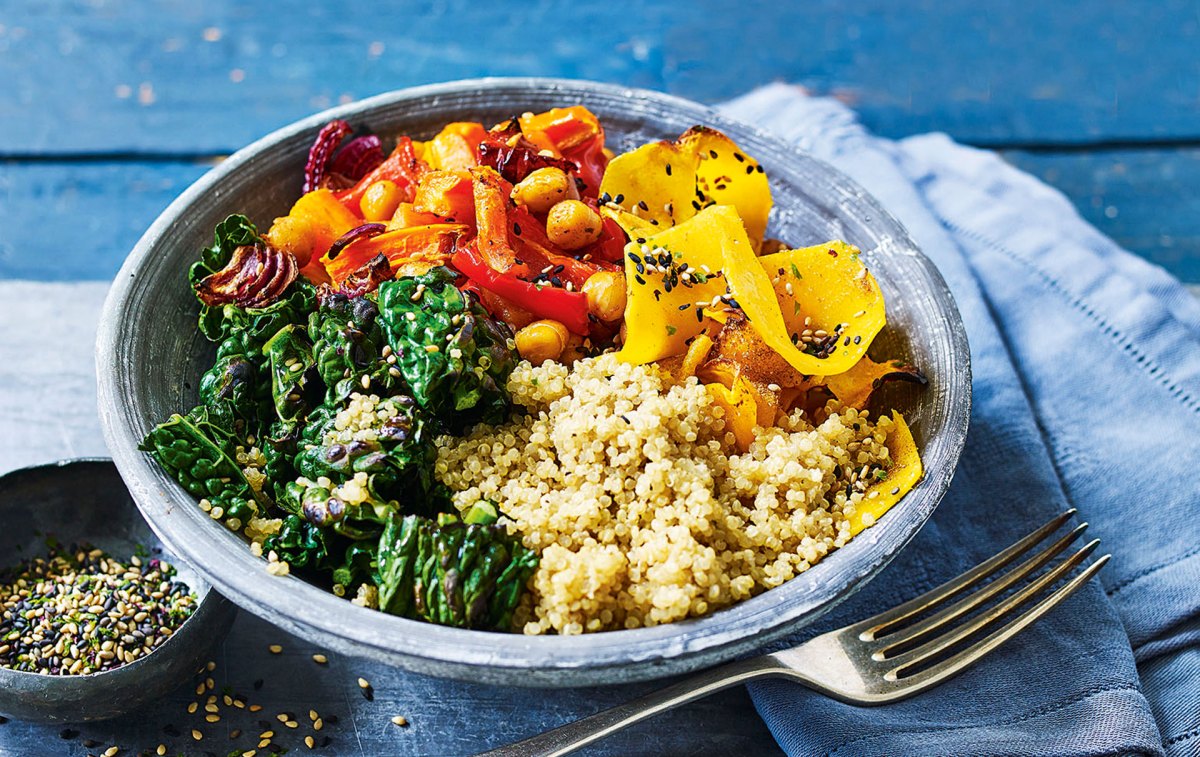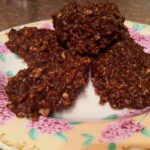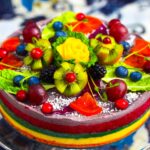Unleash your inner chef and discover the vibrant art of crafting the ultimate raw vegan Buddha bowl. This isn’t just a meal; it’s a culinary masterpiece built on layers of vibrant colors, textures, and flavors. From selecting the freshest, most nutritious ingredients to mastering the art of artful layering and creating tantalizing sauces, we’ll guide you through each step, transforming a simple bowl into a stunning, healthy, and utterly delicious experience.
Prepare to embark on a sensory journey, where the crunch of fresh vegetables harmonizes with the creamy richness of homemade dressings. We’ll explore diverse ingredient combinations, showcasing the versatility of raw vegan cuisine and empowering you to customize your Buddha bowl to perfectly reflect your unique taste preferences. Get ready to elevate your healthy eating game to a whole new level!
Ingredient Selection & Preparation
Crafting the perfect raw vegan Buddha bowl hinges on thoughtful ingredient selection, prioritizing vibrant colors, diverse textures, and a symphony of flavors. The goal is to create a visually appealing and nutritionally complete meal that satisfies both the eyes and the palate. Careful preparation methods are key to preserving the ingredients’ inherent freshness and maximizing their nutritional benefits.
Ideal Ingredients and Nutritional Information
A rainbow of colors signifies a wealth of nutrients. Consider incorporating deep greens like kale or spinach for their vitamin K and antioxidants, vibrant oranges from carrots and sweet potatoes for beta-carotene, and deep reds from beets for nitrates. Include creamy textures from avocados for healthy fats, crunchy elements like shredded carrots and broccoli for fiber, and juicy bursts from fresh berries or pomegranate seeds for sweetness and antioxidants.
| Ingredient | Nutritional Benefits | Preparation Method | Flavor Combination Suggestions |
|---|---|---|---|
| Kale | High in vitamins A, C, and K; rich in antioxidants. | Wash thoroughly, remove stems, and finely chop or massage with a little lemon juice to soften. | Pairs well with lemon, tahini dressing, and crunchy seeds. |
| Avocado | Excellent source of healthy monounsaturated fats, fiber, and potassium. | Dice or slice; use ripe avocados for optimal creaminess. | Complements almost any other ingredient; enhances creamy textures. |
| Carrots | Good source of beta-carotene (converted to vitamin A), fiber, and antioxidants. | Wash, peel (optional), and shred or julienne for a crunchy texture. | Pairs well with ginger, turmeric, and other root vegetables. |
| Beets | Rich in nitrates, which can improve blood flow and athletic performance; good source of fiber and folate. | Wash, peel, and thinly slice or dice. Soaking in water can help reduce bitterness. | Pairs well with citrus fruits, goat cheese (vegan alternative), and walnuts. |
| Broccoli | Excellent source of vitamin C, fiber, and antioxidants. | Wash, remove tough stems, and chop into florets. | Pairs well with sesame seeds, soy sauce (tamari), and a light vinaigrette. |
| Pomegranate Seeds | Good source of antioxidants and vitamin C. | Remove seeds from the fruit; no further preparation needed. | Adds a burst of sweetness and tartness; complements savory flavors. |
Vegetable, Grain, and Legume Comparison
Choosing the right combination of vegetables, grains, and legumes ensures a balanced and satisfying meal. The table below compares several options, highlighting their nutritional profiles and flavor pairings.
| Category | Ingredient | Nutritional Benefits | Flavor Combinations |
|---|---|---|---|
| Vegetables | Cucumber | Hydrating, rich in vitamin K, and low in calories. | Pairs well with mint, dill, and lemon. |
| Vegetables | Bell Peppers | Good source of vitamin C and antioxidants; adds vibrant color. | Pairs well with other vegetables, hummus, and a light vinaigrette. |
| Grains/Seeds | Sunflower Seeds | Good source of vitamin E, selenium, and healthy fats. | Adds a nutty, crunchy texture; pairs well with many flavors. |
| Grains/Seeds | Hemp Seeds | Complete protein source, rich in omega-3 and omega-6 fatty acids. | Adds a slightly nutty flavor; pairs well with fruits and vegetables. |
| Legumes | Sprouted Mung Beans | High in protein and fiber; easier to digest when sprouted. | Pairs well with other vegetables, tahini, and ginger. |
| Legumes | Edamame | Good source of protein and fiber; adds a unique texture. | Pairs well with soy sauce, sesame oil, and chili flakes. |
Building the Perfect Bowl
Creating a visually stunning and delicious raw vegan Buddha bowl is as much about artful arrangement as it is about ingredient selection. The strategic layering of colors, textures, and flavors elevates the bowl from a simple meal to a culinary masterpiece. Careful consideration of ingredient placement maximizes visual appeal and ensures each bite offers a delightful combination of tastes and textures.
Optimal Layering Techniques
The key to a beautiful Buddha bowl lies in thoughtful layering. Begin with a base of greens – a vibrant bed of spinach, kale, or mixed greens provides a refreshing foundation and a beautiful canvas for the other ingredients. Next, add heartier elements like grains or roasted vegetables, creating a textural contrast and visual depth. Then, strategically place colorful additions like diced bell peppers, shredded carrots, or vibrant purple cabbage. Finally, top with a protein source, such as edamame or hemp seeds, and a vibrant sauce or dressing, creating a final flourish of color and flavor. Remember to leave some negative space; don’t overcrowd the bowl.
Three Visually Appealing Buddha Bowl Arrangements
Three distinct arrangements highlight the versatility of Buddha bowls.
Arrangement 1: The Tropical Sunset Bowl
This bowl features a warm color palette reminiscent of a sunset. A base of vibrant orange shredded carrots is topped with a mound of golden turmeric-roasted sweet potatoes. Next, add chunks of vibrant red bell pepper and a scattering of bright green avocado slices. Finally, garnish with toasted coconut flakes and a drizzle of a creamy mango dressing. The warm colors and varied textures create a visually striking and delicious combination.
Arrangement 2: The Emerald Isle Bowl
This arrangement focuses on cool, refreshing colors and textures. A base of dark leafy greens, like kale or spinach, is topped with a vibrant mix of finely shredded broccoli, cucumber ribbons, and edamame. A vibrant green pesto dressing is swirled over the top, adding a final layer of color and flavor. Toasted sesame seeds add a subtle nutty flavor and visual interest.
Arrangement 3: The Rainbow Delight Bowl
This bowl is all about vibrant color contrast. A base of mixed greens is topped with a colorful array of ingredients: red bell pepper strips, orange shredded carrots, yellow bell pepper dices, green broccoli florets, and purple cabbage shreds. A sprinkle of hemp seeds adds protein and visual texture. A vibrant lemon tahini dressing ties the colors and flavors together, creating a truly visually stunning and healthy meal.
Creative Garnishes and Toppings
Garnishes are not merely decorative; they add a final layer of flavor and visual appeal.
Toasted nuts and seeds: Toasted sesame seeds, sunflower seeds, or slivered almonds add a delightful crunch and visual texture. Their earthy notes complement the fresh flavors of the bowl. A scattering of toasted pumpkin seeds adds both a visual and textural element, with a slightly sweet and nutty flavor.
Fresh herbs: A sprinkle of fresh cilantro, parsley, or mint adds a burst of freshness and vibrant green color. Their aromatic qualities enhance the overall flavor profile. Microgreens add a delicate, peppery flavor and a vibrant pop of color.
Edible flowers: Adding edible flowers like pansies or nasturtiums not only creates a visually stunning effect but also adds a subtle, delicate flavor. Their bright colors and unique shapes make them a perfect final touch.
Sprouts: Adding alfalfa or radish sprouts provides a slightly peppery, crunchy texture and a beautiful visual contrast. Their delicate flavor complements the other ingredients in the bowl.
Step-by-Step Recipe & Visual Guide

This recipe will guide you through creating a vibrant and nutritious raw vegan Buddha bowl, showcasing the beauty of fresh, uncooked ingredients. Each step is designed to build a visually appealing and flavourful masterpiece. The visual descriptions will help you envision the transformation at each stage.
Recipe Preparation
Before we begin assembling the bowl, let’s prepare the individual components. This ensures everything is ready and enhances the overall efficiency and enjoyment of the process. Careful preparation is key to a successful Buddha bowl.
- Spiralized Zucchini Noodles: Using a spiralizer, create long, thin strands of zucchini. Imagine a bright green, almost grassy, pile of perfectly formed noodles. Their texture is firm yet slightly yielding, ready to absorb the flavors of the dressing.
- Chopped Red Cabbage: Finely chop the red cabbage into thin strips. Picture a vibrant crimson pile, with the glistening purple-red hues of the cabbage reflecting the light. The texture is crisp and slightly crunchy.
- Diced Avocado: Dice a ripe avocado into small, bite-sized cubes. The avocado presents a creamy, pale green color, almost jade-like. The texture is smooth and buttery, promising a rich, velvety mouthfeel.
- Sliced Carrots: Thinly slice vibrant orange carrots. Envision a sunny, bright orange pile, the carrots gleaming with a slightly glossy surface. Their texture is crisp and slightly sweet.
- Chopped Red Bell Pepper: Dice a red bell pepper into small, uniform pieces. The red pepper is a deep, intense scarlet, with a glossy sheen. The texture is firm and crisp, offering a pleasant crunch.
- Toasted Sunflower Seeds: Lightly toast sunflower seeds in a dry pan until fragrant. The seeds are a rich, golden brown, their surface slightly darkened from the toasting process. Their texture is crisp and nutty.
- Lemon-Tahini Dressing: Whisk together 2 tablespoons of tahini, 1 tablespoon of lemon juice, 1 tablespoon of water, and a pinch of salt until smooth and creamy. The dressing is a pale, creamy off-white, almost ivory in color. Its texture is smooth and slightly viscous.
Bowl Assembly
Now, let’s bring all the prepared ingredients together to create the perfect Buddha bowl. The arrangement is as important as the ingredients themselves, contributing to the overall visual appeal.
- Base Layer: Begin by placing the spiralized zucchini noodles in the center of a bowl, forming a base layer. This creates a vibrant green foundation, the noodles laying in a slightly tangled, yet organized manner.
- Second Layer: Arrange the chopped red cabbage around the zucchini noodles. The deep red of the cabbage provides a striking contrast to the green, creating a visually appealing combination of color and texture.
- Third Layer: Distribute the diced avocado over the cabbage. The creamy pale green of the avocado softens the visual intensity, creating a harmonious balance of colors and textures.
- Fourth Layer: Add the sliced carrots, strategically placing them amongst the avocado. The bright orange of the carrots adds another layer of visual interest, creating a colorful and vibrant arrangement.
- Fifth Layer: Sprinkle the chopped red bell pepper evenly across the bowl. The intense scarlet of the pepper enhances the overall color palette, adding a further dimension of visual richness.
- Garnish: Finally, sprinkle the toasted sunflower seeds over the entire bowl. The golden brown of the seeds adds a final touch of visual appeal, creating a sense of completeness and texture.
- Dressing: Drizzle the lemon-tahini dressing generously over the assembled bowl. The creamy white dressing gently coats the ingredients, adding a touch of visual elegance and promising a delicious flavor.
Creating the perfect raw vegan Buddha bowl is more than just assembling ingredients; it’s an expression of creativity and a celebration of vibrant, wholesome food. By mastering the techniques of ingredient selection, artful layering, and flavor balancing, you’ll not only nourish your body but also delight your senses. So, gather your ingredients, embrace the process, and prepare to be amazed by the stunning results. Your culinary journey to Buddha bowl bliss awaits!
Popular Questions
Can I make this bowl ahead of time?
It’s best to assemble your Buddha bowl just before serving to maintain the optimal freshness and crispness of the ingredients. However, you can prep ingredients like chopping vegetables and making sauces in advance.
What if I don’t have all the ingredients listed?
The beauty of a Buddha bowl is its adaptability! Feel free to substitute ingredients based on your preferences and what’s available. Focus on maintaining a balance of colors, textures, and flavors.
Are there any storage tips for leftovers?
Store leftover ingredients separately in airtight containers in the refrigerator. Do not store the assembled bowl for extended periods, as the ingredients may wilt.
How do I make the sauces thicker or thinner?
To thicken a sauce, add more nuts or seeds. To thin it, add a little more water or lemon juice.


